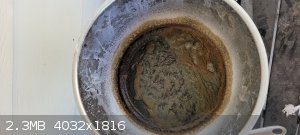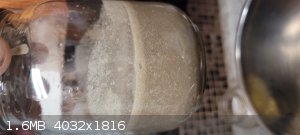
Rainwater - 29-12-2021 at 06:50
I want to setup the typical garden experiment.
I have a few exotic metals left over from my last refining batch as well as some common ones
Au ag pt cu w al ni
My first step i think will be to fire up my electric kiln to about 325c @ a rate of 100c an hour .
In a large stainless steel bowl
Boil down my NaOH solution with a sizeable amount of pool filter sand.
Let cool to room temp then dissolve in water to make waterglass
??? Dumb or workable ???
Next would be the salts
copper sulfate. I like the blue.
Would love to have some Cobalt(II) chloride but not sure where i can source it.
Aluminium potassium sulfate i can make
Iron sulfate i can make
Anyone know what forms of au ag pt or w would work.
I belive they need to be soluble but form oh complexes that are not
Edit: slightly used stainless steel pot for sell. $15 obo
[Edited on 29-12-2021 by Rainwater]

What use to be 2.5L of 11% by mass NaOH solution added to 500grams of "pool filter sand" package as "high quality silica sand"
Slowly heated to 325c and left to soak for 1 hour turned
nice gray/green viscous solution. Non reactive with water
Is it sodium silicate? Hell if i know. Going to try to clean it up and filter.
[Edited on 29-12-2021 by Rainwater]

DraconicAcid - 29-12-2021 at 12:42
I've never had much luck trying to make my own sodium silicate for water glass.
For the chemical garden, I don't remember how well aluminum works. Nickel works nicely, but the colour (a pale green) is kinda boring. Same with
copper (a pale blue). Iron(II), I think, gives green that turns black, and iron(III) chloride gives weirdly-shaped blobby stalagmites the same colour
as rust. Cobalt also gives colour-changing stalagmites (pink and blue, IIRC). I played with the chemical garden a lot at one time, but that was
decades ago.
I doubt silver would give anything but white (unless it turned black), and I wouldn't waste gold or platinum on it.
I've read in a very old book that similar gardens can be made with borates and phosphates, but I've never found any experimental details.
Apparently, silver and gold do work:
" iron affords a dark brown, copper a green, lead, tin, and mercury a white and grey, silver a blew, and gold a yellow colour.”
https://pubs.acs.org/doi/full/10.1021/acs.chemrev.5b00014
[Edited on 29-12-2021 by DraconicAcid]
[Edited on 29-12-2021 by DraconicAcid]
mayko - 30-12-2021 at 11:54
The article DraconicAcid mentioned is very good; among other things it includes information on phosphate/carbonate solutions rather than silicate. It
also has some info on polyoxometallates (section 7.4) which might be an opportunity to do cool stuff with tungsten.
If you have enough tungsten, you could try using a tungstate medium:
Pimentel, C., Cartwright, J. H. E., & Sainz‐Díaz, C. I. (2020). A Tungstate Chemical Garden. ChemSystemsChem, 2(6), 2–4. https://doi.org/10.1002/syst.202000023
Attachment: php3N5kvM (1.9MB)
This file has been downloaded 168 times
These folks used chloroauric acid as the basis for a chemical garden:
Zissi, G. D., Angelis, G., & Pampalakis, G. (2021). The Generation and Study of a Gold‐Based Chemobrionic Plant‐Like Structure.
ChemSystemsChem, 3(1), 2020–2022. https://doi.org/10.1002/syst.202000018
Attachment: The Generationand Studyof a Gold-BasedChemobrionicPlant-LikeStructure.pdf (1.3MB)
This file has been downloaded 168 times
DraconicAcid - 30-12-2021 at 13:35
Sadly, the article doesn't give concentrations for the various media, but one could hunt down all the various references.
wg48temp9 - 30-12-2021 at 13:43
A chemical garden kit , that may be an interesting gift for children not yet addicted to an xbox.
The sodium silicate is most easily made by adding silica gel (cat litter) to hot moderately concentrated sodium hydroxide. The silica gel dissolves
readily in minutes in unlike quartz sand. That's probably best not done by young children.
The least toxic and colorful metal salts are probably iron, copper and magnesium sulphates preferably crystals a few mm in size.
For a modern twist perhaps an indicated could be added to the sodium silicate such that near the chemical plants the indicator changes colour due to
the decease in pH or a fluorescent dye/indicator could be incorporated into the magnesium sulphate that normally produces only white.
I wounder if say a magnesium sulphate crystals could be grown on a copper sulphate crystal so as the chemical plant grows its color and form changes.
The crystals could be glued to a disc or the bottom of the container prior to adding the silicate solution to produce a more predictable layout.
arkoma - 30-12-2021 at 14:58
https://mrsstewart.com/pages/salt-crystal-garden
*edit* people have told me with a straight face their "meth" recipe. ROFLMAO see above
[Edited on 12-30-2021 by arkoma]
